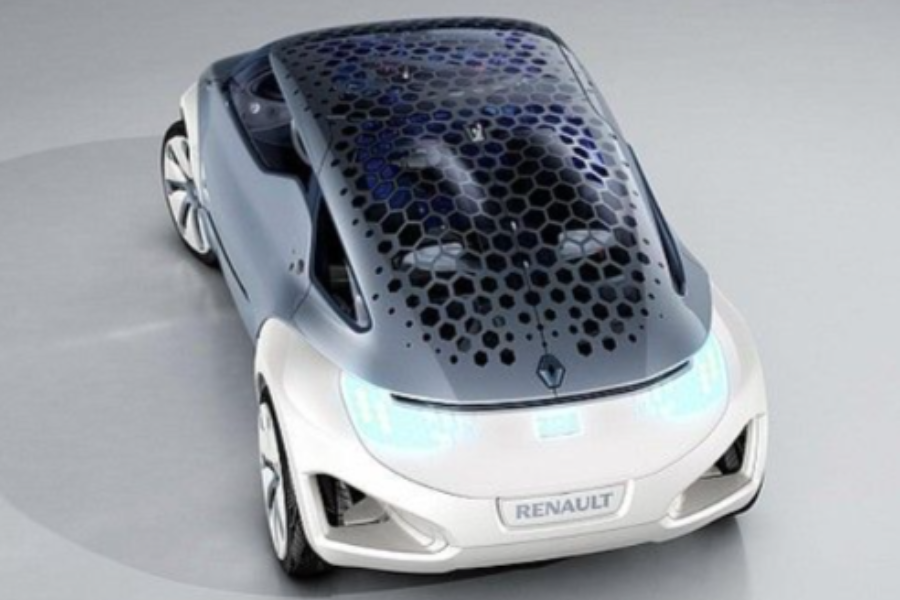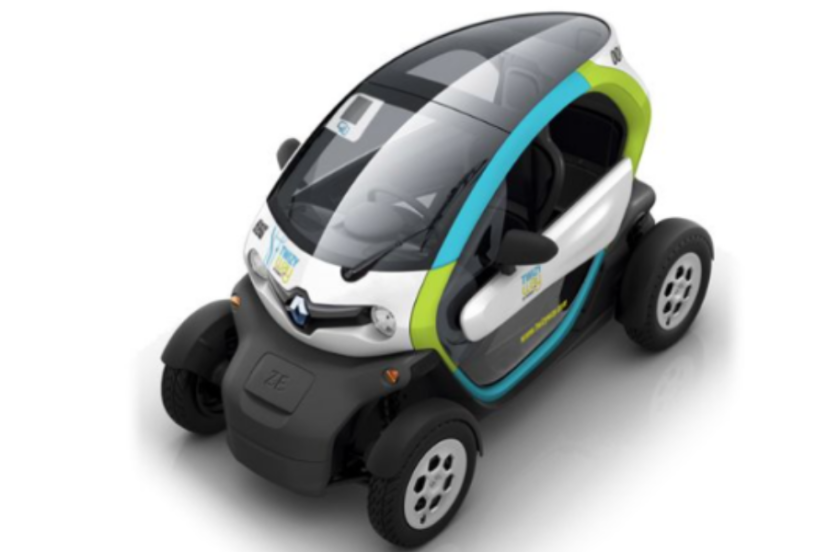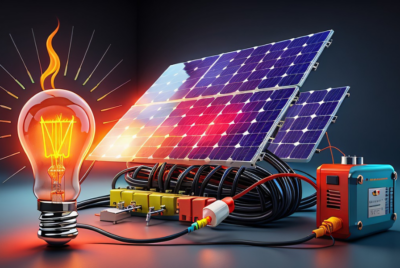Solar Car
Harnessing the Power of the Sun for Sustainable Travel
The Solar car is a captivating innovation in the realm of electric mobility. These vehicles utilize photovoltaic (PV) cells to harness the power of the sun, converting sunlight into electrical energy. This energy is used to charge the car’s battery and drive its electric motors. In this article, we will explore the various aspects of solar cars, from their design and efficiency to the challenges they face in becoming street-legal.
Pioneering Solar Family Cars
Stella: The Solar Trailblazer
In 2013, students in the Netherlands built the first solar family car, Stella. It was a groundbreaking achievement, capable of traveling up to 890 km (550 miles) on a single charge during sunlight.
Stella Lux: Pushing the Limits
Stella Lux, the successor to Stella, set new records with a single-charge range of 1,500 km (932 miles). During daylight, it can cover 1,100 km (700 miles) at 72 km/h (45 mph), with virtually unlimited range at that speed. The secret to this success lies in its impressive efficiency, boasting a coefficient of drag of 0.16.
The Solar-Powered Daily Commute
For the average family with daily driving needs of 320 km (200 miles) or less, a solar car could eliminate the need for frequent recharging. In fact, they might only need to plug in if they wish to contribute excess energy back to the grid.
Solar Cars: Racing Toward a Greener Future
Solar car racing is not just a sport; it’s a captivating glimpse into the future of sustainable transportation.
Unleashing the Potential of Solar Power
Solar car racing is a thrilling and challenging sport that has captivated the imagination of innovators and environmental enthusiasts alike. These events serve as a powerful testament to the possibilities of harnessing solar energy for practical, everyday use. They go beyond being mere competitions; they are platforms for innovation and discovery.
Lightweight and Efficient Design
At the heart of solar car racing lies a core principle: lightweight and efficient design. Solar vehicles are engineered to be aerodynamic marvels, embracing every technological advancement to reduce weight and enhance efficiency. Here’s why these aspects are crucial:
1. Remarkable Range: The fundamental goal of solar car racing is achieving remarkable range with limited solar power. The vehicle’s lightweight structure is instrumental in achieving this. It ensures that the energy captured from the sun is used optimally to cover vast distances.
2. Unmatched Speed: Solar cars may appear sleek and minimalist, but their efficiency is the key to unparalleled speed. Every component is carefully crafted to minimize energy wastage and maximize velocity. This characteristic enables solar vehicles to not only compete but often outperform traditional gasoline-powered cars.
3. Solar Energy Utilization: Unlike fossil-fuel-dependent vehicles, solar cars are a showcase of clean, sustainable technology. They convert sunlight into electric power with astonishing efficiency. Their photovoltaic cells capture solar radiation and translate it into energy that drives the vehicle, all without harmful emissions.
4. Energy Conservation: In a world where sustainability is paramount, solar car racing highlights the importance of energy conservation. The more efficient the design, the less strain is placed on our finite resources. It’s a striking example of how innovation can align with environmental stewardship.
The engineering marvels seen on the solar car racing circuit not only inspire but also challenge the automotive industry to reevaluate its approach to energy and transportation. These lightweight and efficient vehicles are more than just high-speed novelties; they are tangible proof of the advancements we can achieve when we harness the power of the sun. In this electrifying sport, the future of greener, more sustainable transportation is not a distant dream but a reality racing toward us.
Street Legality: A Complex Challenge
The vision of solar cars zipping around our cities, powered by the sun’s renewable energy, is undoubtedly captivating. However, the practicalities of integrating these innovative vehicles into our daily lives present a complex and multifaceted challenge. In this section, we’ll navigate through the hurdles that need to be overcome in order to make solar cars a feasible and street-legal option for the masses.
1. Safety Standards and Regulations: Before a vehicle can hit the streets, it must meet rigorous safety and performance standards. Solar cars often prioritize lightweight materials for efficiency, which can be at odds with traditional safety measures. Achieving a balance between solar efficiency and passenger safety is an ongoing challenge.
2. Consumer Expectations: Most modern drivers are accustomed to certain features in their vehicles, such as air conditioning, power windows, and advanced entertainment systems. Solar cars, designed for efficiency, may not always cater to these expectations. Adapting solar cars to align with consumer desires without compromising energy efficiency is a delicate balance.
3. Battery Technology: Solar cars primarily rely on advanced battery technology to store and utilize solar energy. Currently, these technologies are in a state of evolution, and advancements are needed to make solar cars a practical choice for daily commuting. This includes improving battery storage capacity and charging times.
4. Infrastructure: To support a fleet of solar cars, significant infrastructure upgrades are necessary. Charging stations compatible with solar vehicles must be deployed, and the electrical grid must be able to handle increased demand. Transitioning to a solar car-dominated society requires substantial investments.
5. Laws and Regulations: Existing traffic laws and regulations were not designed with solar cars in mind. Adjusting these legal frameworks to accommodate solar vehicles is a time-consuming process. Questions about licensing, insurance, and liability must be addressed.
6. Public Awareness: A significant hurdle is educating the public about the benefits and limitations of solar cars. Building trust in this new technology is crucial. Many potential users may be hesitant or skeptical, making awareness campaigns an essential aspect of making solar cars street-legal.
7. Affordability: Currently, solar cars are often expensive to produce, purchase, and maintain. Making these vehicles more accessible to a broader demographic is essential for widespread adoption.
As we navigate the complex challenge of making solar cars street-legal, it’s evident that numerous factors come into play. From safety and regulations to consumer expectations and infrastructure, addressing these issues is vital to realizing the full potential of solar cars as a sustainable mode of transportation. The journey toward solar-powered streets is exciting, but it’s clear that it requires a collective effort from the automotive industry, policymakers, and consumers alike.
Commercialization of Solar Cars
Lightyear: From Students to Entrepreneurs
Some students who played a part in creating Stella Lux went on to establish Lightyear, a company dedicated to bringing this technology to a broader market.
Aptera Motors: A Leap Towards Efficiency
Aptera Motors is an American company with a mission to produce efficient solar electric cars for public use. These cars are expected to be available to customers in 2023.
Sono Motors: Shifting Focus to Solar Tech
Sono Motors in Germany initially aimed to launch the solar electric vehicle Sion in 2023, but they’ve recently redirected their focus toward becoming a solar tech company.

Harnessing Solar Power for Electric Vehicles
When discussing solar cars, it’s important to remember that the technology doesn’t just apply to these specialized vehicles. All battery-powered electric vehicles have the potential to benefit from external solar arrays as a source of recharging. These arrays can also be connected to the general electrical distribution grid. This dual approach provides a sustainable power source while ensuring that your vehicle remains charged, reducing the reliance on traditional electrical grids.
For solar car enthusiasts, this approach can significantly reduce their carbon footprint. While not all electric vehicles are equipped with built-in solar panels like solar cars, these external solar arrays serve as an eco-friendly alternative to conventional charging methods.




